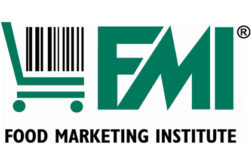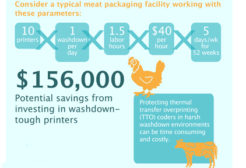Food Safety
TECH FLASH
The Food Marketing Institute is now accepting applications for the 2014-2015 academic year.
Read More
Engineering R&D
Surface appeal: Novel antimicrobial for direct food contact
Novel antimicrobial quickly neutralizes broad range of pathogens on food contact surfaces; now takes aim at direct food contact.
March 8, 2014
Food Safety
Raw materials: Test or no test?
You can send incoming raw material samples out to a third-party lab, but plenty of easy-to-use, rapid test kits can more quickly provide the results you need—right at your own facility.
March 8, 2014
TECH FLASH
FDA agrees to deadline on FSMA implementation
A consent agreement will push back the original court-imposed timeline.
February 26, 2014
TECH FLASH
Are your TTO coders durable enough for your packaging equipment?
Washdowns in meat and poultry facilities can damage sensitive equipment.
February 26, 2014
TECH FLASH
Center for Food Safety sues FDA over GRAS rules
The lawsuit accuses FDA of exempting from regulation potentially dangerous substances such as food additives.
February 26, 2014
TECH FLASH
FDA’s Michael Taylor to Congress: FSMA will fall short without more funding
However, industry opposes proposed measures to raise funds.
February 12, 2014
Integrated Pest Management
Pest Control: The best defense? A good offense
Integrated pest management protects profits by relying on maintenance and sanitation for pest control, rather than chemical treatments that may require plant downtime.
February 7, 2014
Engineering R&D
X-ray's double take on inspection detection
Dual energy X-ray systems bring value added detection features to identify missing product, damaged product, dented or altered packaging and presence of a premium item.
February 7, 2014
Elevate your expertise in food engineering with unparalleled insights and connections.
Get the latest industry updates tailored your way.
JOIN TODAY!Copyright ©2024. All Rights Reserved BNP Media.
Design, CMS, Hosting & Web Development :: ePublishing








